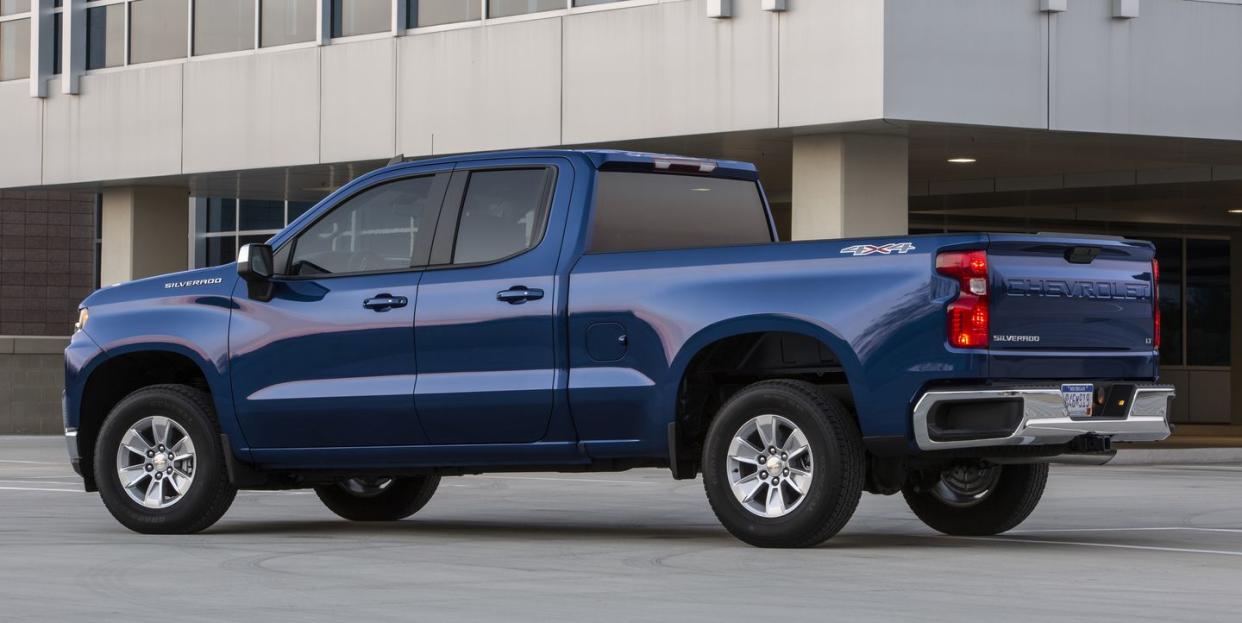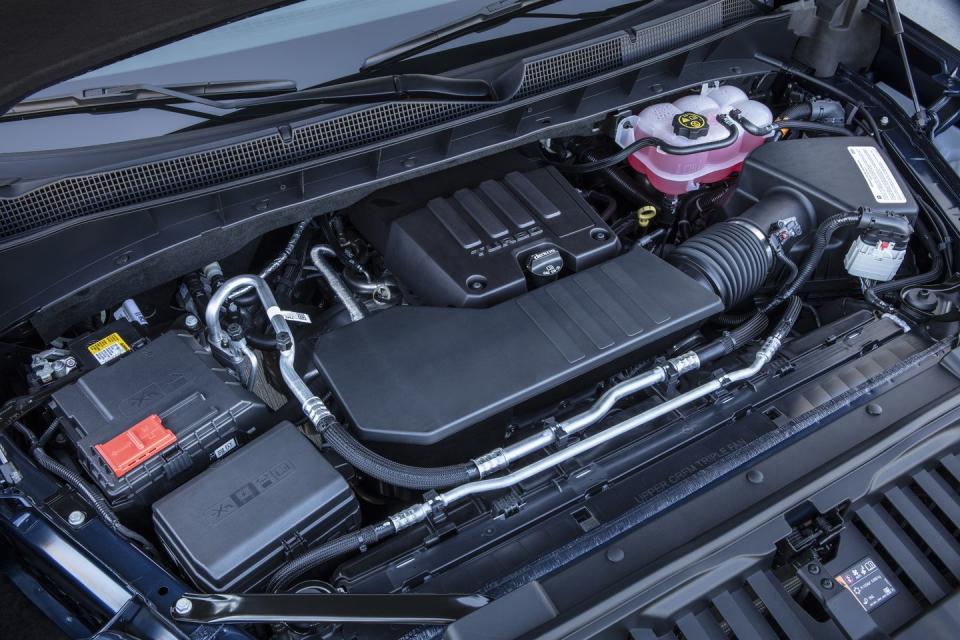The Chevrolet Silverado Four-Cylinder Gets Worse Fuel Economy Than the V-8 in Our Test

Small gains in the efficiency of a heavy, wind-catching pickup truck result in a sizable percentage swing. Take two versions of Chevrolet's new 2019 Silverado 1500, for example. One is powered by the equally new turbocharged 2.7-liter inline-four and the other has an updated 5.3-liter V-8; both engines are paired with General Motors' eight-speed automatic transmission and a four-by-four transfer case. The largest font on their respective window stickers belongs to the EPA's combined fuel-economy estimate: the 2.7 boasts a big 20 mpg, while the tried-and-true small-block posts a score of 18 mpg. These 2 mpg represent an 11 percent improvement for the 2.7. "Actual results will vary for many reasons" is among some of the smallest print.
On the highway cycle, however, the EPA says the trucks should get an identical 22 mpg. For all the chest pumping that manufacturers do over downsizing and turbocharging, we found it curious that a pushrod V-8 could even come close to challenging it in any area of efficiency. So, since we recently had a Silverado 2.7T, specifically a Double Cab in RST trim, in the office, we ran it on our 75-mph highway fuel-economy test, which we call the "HFE test" for short.
We couldn't have been more shocked by the result. The 2.7T averaged 18 mpg over the 200-mile test, a 28 percent drop from the 21 mpg we observed in the 5.3-liter RST Crew Cab, which was a full 314 pounds heavier.

How is that possible? you ask. Our real-world test runs vehicles at relatively high speed, and while the downsizing and turbocharging approach is a benefit to the EPA test cycles, the 2.7 still needs to move a brick through the air. We suspect it is on boost or making use of the turbo at 75 mph. The exact opposite-the engine essentially operating as a naturally aspirated four-banger-is probably true during the 48-mph EPA highway test cycle.
The 5.3 also benefits from some fancy bit of tech that GM calls Dynamic Fuel Management, which is capable of running 17 different ignition cycles to maximize fuel economy.
Yet another inner-GM ego blow comes in the form of a GMC Sierra 1500 Denali we evaluated during this year's 10Best Trucks and SUVs competition. Despite its 6.2-liter V-8 having more than twice the displacement and 110 additional horsepower-it also gets a 10-speed automatic rather than the 8-speed-the Denali managed to tie the 2.7T's 18-mpg HFE result. The only half-ton pickup we've tested that has done worse on the HFE test is a 2017 Toyota Tundra SR5 fitted with the TRD Off Road package. It got 17 mpg. Even the Ford F-150 Raptor matches the effort of the Silverado 2.7T.
All this talk of the worst begs the question, which truck is the best?
For all pickups we’ve tested to date, that honor goes to both the Honda Ridgeline and the diesel-powered GMC Canyon, each of which got 28 mpg.
The best half-ton result was 26 mpg, owned by a Ford F-150 Crew Cab 4x4 with the Power Stroke diesel.
It is worth noting that GM's 2.7-liter isn't the last engine it's releasing for the new half-ton siblings. There is a 3.0-liter diesel inline-six coming that should challenge the F-150 and maybe even those mid-sizers for the pickup crown of HFE. When and if it does, we'll let you know.
('You Might Also Like',)

